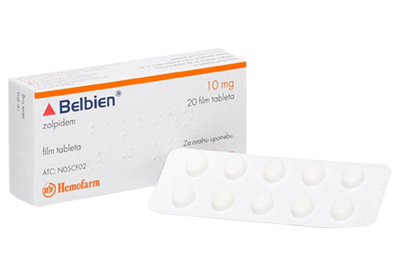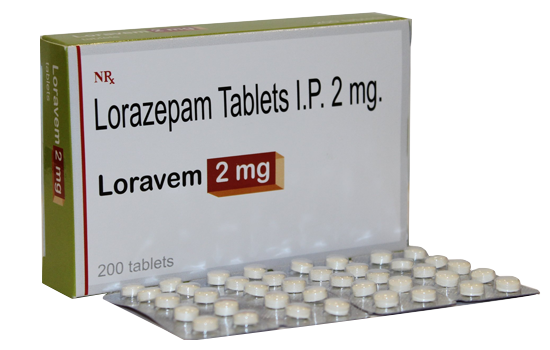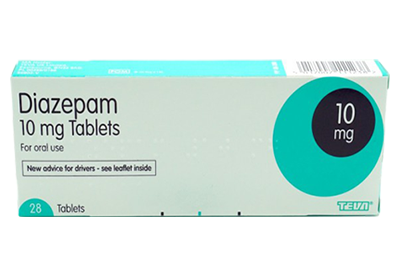
Zolpidem
This drug is part of the non-benzodiazepine sedative class of medications that is used in the treatment of sleep issues. It is mainly administered to people who have issues falling asleep and wake often throughout the night. It helps to calm overactive brain activity and the nervous system, making it easier to be relaxed, fall asleep quickly and remain asleep for 7-8 hours.
£5.97 £3.77
Go to PharmacyBelonging to the Z drugs classification, zolpidem was developed to provide sedative benefits without the residual hangover effect the following day that previous generations of sleeping pills demonstrated. Zolpidem has a shorter half-life, which means it tends to clear from the body more quickly. This feature reduces the likelihood of feeling drowsy or impaired after waking up.
It is most commonly used for a short period, helping patients regain the sleep needed and get back on a normal sleep schedule. Zolpidem is one of the most widely studied treatments for insomnia and is highly regarded for its excellent safety profile and effectiveness.
What is Zolpidem?
This medication was developed in the late 1980s by the French pharmaceutical company Synthelabo, which later became part of the company Sanofi. It was introduced as a newer type of treatment for insomnia. The medicine zolpidem was approved in 1988 and later received FDA approval in 1992, it is now the most used sleeping tablet worldwide.
This medication is generally offered in zolpidem 10 mg and 5 mg doses, with extended and quick-release options designed to help with both sleep onset and maintenance. This medication is licensed and approved for short-term treatment of insomnia.
This treatment is more recognisable under the brand names Ambien and Stilnox. Other brands include Edluar and Intermezzo, that are available in formulations such as sublingual or extended-release tablets. Zolpidem belongs to the group known as non-benzodiazepine hypnotics, often referred to as a type of “Z-drugs”.
How Zolpidem Works
The drug works by binding to the gamma-aminobutyric acid (GABA) receptor in the brain. It enhances the effects of GABA, the neurotransmitter that helps slow overactive brain activity and by boosting this natural process, zolpidem reduces wakefulness and makes it easier to fall asleep.
A feature of zolpidem that makes it different is it mainly acts on the alpha-1 subunit of the GABA-A receptor, which is strongly linked to sedation but not to muscle relaxation or anxiety. Other benzodiazepines act more broadly, while this medication is more focused.
Users typically feel the effect begin within about 30 minutes and wear off relatively quickly, limiting the effects of daytime drowsiness. Zolpidem 10 mg dosage has a shorter half-life that supports normal sleep patterns while minimizing carryover sedation. Its targeted receptor activity promotes deeper rest with improved next-day alertness.
Z Drugs
Z drugs are the group of medications that have been scientifically developed for the treatment of insomnia and sleep disorder. Z drugs like zolpidem were originally developed as alternatives to benzodiazepines, aiming to provide effective relief of sleep problems with a more favourable safety profile. Their design allows for shorter half-lives and more selective activity on sleep-related receptors, which reduces next-day sedation, showing fewer side effects and limits the risk of dependence compared to older hypnotics.
Zolpidem is one of these Z drugs that are mainly used for the short-term treatment of insomnia, especially difficulty falling asleep. They remain a preferred option in clinical settings because of their rapid onset and the evidence supporting their tolerability. Compared with traditional sedatives, they are considered both effective and generally well tolerated. Among this group, zolpidem is one of the most widely studied, with a good safety profile, that is highlighted in both studies and clinical use. For many medical professionals, it has become the first-line choice within the class of Z drugs offered.
Clinical Uses
Sleep-Onset Insomnia
Zolpidem is widely used when there is difficulty falling asleep. It can be distributed to be more rapidly absorbed in the body, helping to shorten the time it takes to start to sleep, making it useful when the primary problem is extended periods of lying awake.
Sleep-Maintenance Insomnia
For patients who can fall asleep but frequently wake during the night. A controlled-release format of zolpidem can provide extended support by maintaining therapeutic levels of medication for several hours, reducing constant awakening, and sustaining continuous rest.
Early-Morning Awakening
Some individuals may wake too early and struggle to return back to sleep. Formulations such as sublingual tablets of zolpidem are designed to be used in the middle of the night, providing a quick solution to get back to sleep. This option is used when the main issue is premature waking.
Non-Restorative Sleep
This is when sleep occurs, but the person still feels there was not enough sleep. Zolpidem can enhance sleep quality, allowing patients to wake feeling more rested.
Sleeping Pills Comparison Chart
Below are some comparisons in onset times, durations and usage of various sleeping aids:
| Drug | Onset of Action | Duration | Common Uses | Notes |
|---|---|---|---|---|
| Zolpidem | Around 15-60 min depending on form | 6- 8 hrs | Insomnia, sleep initiation | More immediate effects. Less Likely to cause next-day grogginess. Better for people who have trouble falling asleep |
| Zopiclone | Around 45-60 min | 7-8 hrs | Insomnia, sleep maintenance | Longer duration. Used for frequent awakening and difficulty getting back to sleep |
| Valerian | 1 hr, varies | 4- 6 hrs | Herbal aid, mild insomnia | No scientific evidence to confirm this supplements effectiveness |
Zolpidem has a more rapid onset, helping patients fall asleep quickly. The quick half-life ensures no next day drowsiness or prolonged after effects. Zopiclone acts more slowly, lasts longer and should only be used when 8 hours of sleep are planned. Taking it and waking up before the 8 hours has passed can lead to morning drowsiness. Valerian is herbal supplement that has few side effects but limited evidence of effectiveness.
Dosage and Administration
This treatment is most commonly taken by mouth in tablet form, usually just before bedtime. The recommended strength for adults is often zolpidem 10 mg, but a 5 mg dose may be considered in sensitive groups such as the elderly. Extended-release tablets are available for those who also struggle with waking during the night. Sublingual and oral spray forms are also available for faster absorption.
Zolpidem works best when taken on an empty stomach and is absorbed quickly. Food can delay its effect, leading to a longer onset of effectiveness. The medication should only be taken when Individuals can devote a full night of sleep to avoid next-day drowsiness. Treatment is normally short, and the duration is often a few days to a few weeks, to limit the risk of zolpidem dependence. Stopping treatment abruptly can result in withdrawal symptoms, so including a dosage reduction plan at the end of treatment is advised.
Safety and Potential Side Effects
Zolpidem is generally well tolerated in the body, but like all medications, side effects are possible. Some common but rare reactions can include dizziness, drowsiness, headache, and nausea. These are usually mild and tend to improve once the body adjusts to the medication.
Although rare some reported unusual side effects include sleepwalking, sleep-eating and sleep-driving while not fully awake. In rare cases, zolpidem may also cause memory issues or confusion. This drug should not be combined with alcohol or other sedatives, as this increases the risks of a severe reaction.
Zolpidem’s overall safety record is supported by extensive clinical use but careful administration is important, as patients are strictly advised to follow the dosing guidelines given. Users should avoid situations where alertness is needed after taking the medication. If taken as directed, most side effects go unnoticed, are manageable and lessen as the body becomes adjusted.
Risks, Dependence and Precautions
Zolpidem, like many hypnotics, carries risks if used for longer than intended. Continuous daily use can cause dependence and tolerance to the medication may increase. This means that people who take it for longer than advised may require a stronger dosage to get the same effects. This should be avoided. Speak to a medical professional and look to alternate treatments periodically to avoid developing a tolerance to any given treatment
Users of the medication must avoid taking it with alcohol, opioids, or other central nervous system depressants, as these combinations can significantly increase sedation and the increase the chance of breathing problems. Some elderly adults are at greater risk of falls and confusion, and a lower dose is generally advised.
Zolpidem must be taken as directed, and careful adjustments may be required for treatment depending on age and overall health of the individual user. When sudden discontinuation happens after long-term use, there is a possibility of rebound insomnia or withdrawal symptoms. Slow reduction or tapering down the dose under supervision may be suggested to reduce risks.
Price of Zolpidem
The cost of zolpidem depends on strength, pack size, and formulation. Standard tablets are generally less expensive than extended-release or specialized versions. Prices may vary between different providers as well as the branded or generic version.
With the recent introduction of online pharmacies zolpidem 10 mg is available from the internet. Here is an example of common price ranges for this treatment:
| Pack Size (Tablets) | Strength | Price Range (GBP) |
|---|---|---|
| 30 | 10 mg | £40-45 |
| 60 | 10 mg | £59-64 |
| 90 | 10 mg | £84-89 |
Frequently Asked Questions
What is the drug zolpidem?
Zolpidem is a sedative-hypnotic treatment used mainly for insomnia. It acts on GABA receptors in the brain to reduce activity and help induce sleep. The short half-life of the drug reduces the chances of next day drowsiness.
Is 5mg of zolpidem enough?
5 mg is usually administered to elderly patients or people new to the drug. The standard is zolpidem 10 mg, but the dosage should match the lowest effective amount to minimize risks and side effects while achieving the required sleep benefits.
How long does zolpidem take to work?
It typically works within 30 minutes after ingestion. Food can slow absorption, so it is generally recommended to take it on an empty stomach. Its rapid onset is one of its main advantages compared to some other sleeping pills.
What are the normal side effects?
Common side effects of zolpidem can include dizziness, drowsiness, headache, and mild gastrointestinal discomfort. Some individuals may experience short-term memory problems or unusual sleep behaviours. Most effects are temporary and often lessen once the body adapts to the medication.
Is dependence possible?
Yes, dependence on zolpidem is possible with prolonged use. Tolerance can also develop, requiring higher doses for the same sleep effect. For this reason, it is generally recommended for short-term use under careful administration.
Are withdrawal symptoms possible and how can I manage them?
Possible rebound of insomnia, restlessness, or anxiety can come from withdrawal. These are more likely after long-term use of zolpidem in higher doses. Gradual tapering off the treatment rather than sudden discontinuation can help reduce symptoms and support safer discontinuation.


